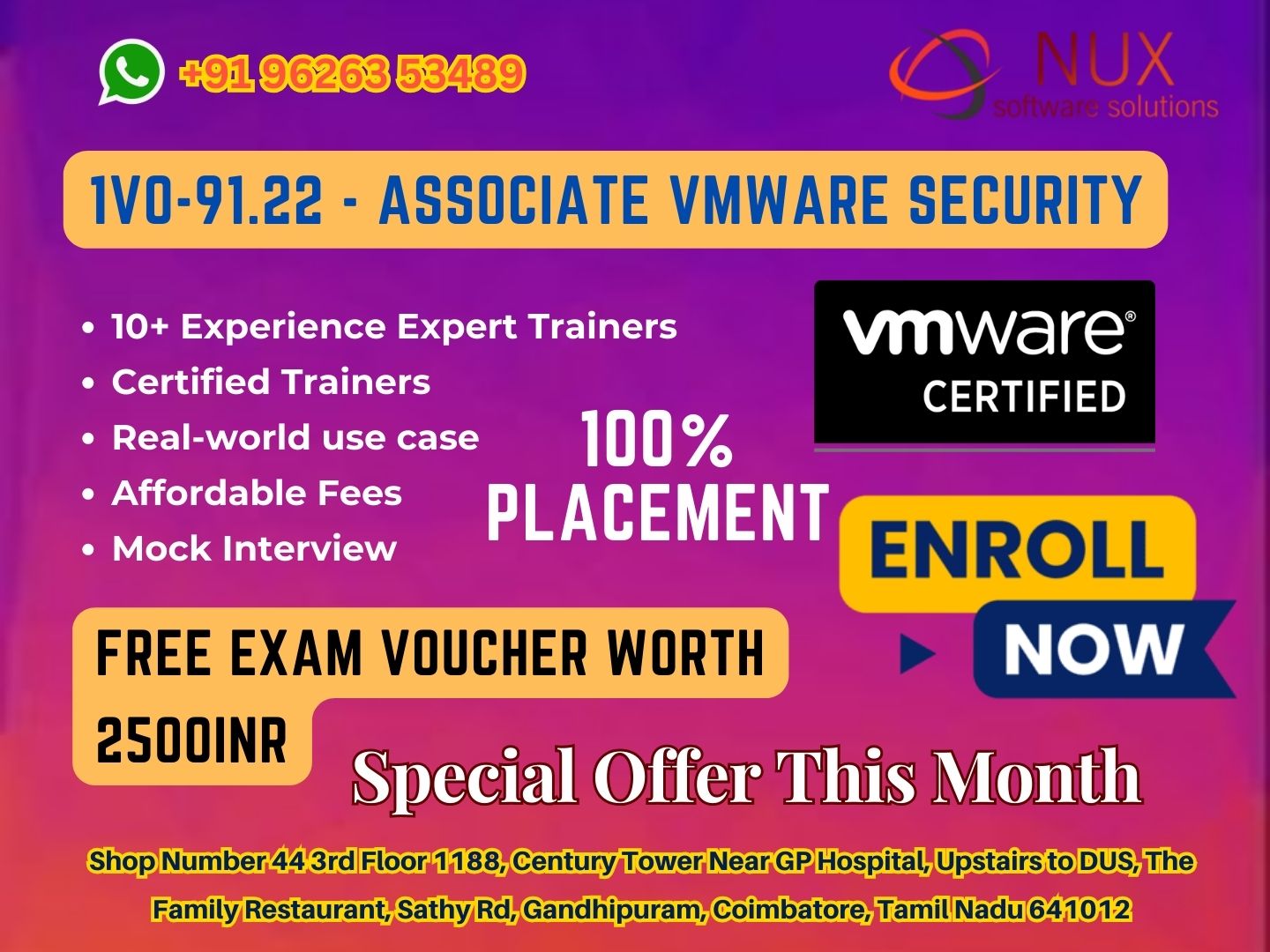VMware Security Technical Associate Training and Certification

Course Overview
The VMware Security Technical Associate training introduces learners to the foundational principles of cybersecurity within the VMware ecosystem. As digital threats evolve, this entry-level course focuses on how VMware’s technologies support security-first IT infrastructure design.
Participants will explore core concepts such as zero trust architecture, micro-segmentation, secure workload management, and intrinsic security across data centers, cloud, and edge environments. The course also includes an introduction to VMware solutions like NSX, Carbon Black, and vSphere security features.
This course is ideal for beginners and IT professionals looking to understand how VMware integrates security into its products.
Why Choose This Course
Understand how security is built into the VMware platform architecture
Learn foundational cybersecurity principles aligned with modern infrastructure
Discover how VMware tools like NSX, Carbon Black, and vSphere improve threat resilience
Gain insights into real-world security scenarios and defense strategies
Earn a VMware Security Technical Associate digital badge to validate your skills
Who Should Enroll
Entry-level IT professionals or students interested in cybersecurity
Beginners looking to build a foundation in virtualization-based security
System administrators exploring VMware’s intrinsic security capabilities
Security analysts, support engineers, and consultants starting their VMware journey
Individuals preparing for higher-level certifications like VCP – Security
Skills You Will Gain
Understanding security models and principles in modern IT environments
Overview of zero trust architecture and micro-segmentation
Basic concepts of endpoint detection, response (EDR) and workload protection
Introduction to VMware NSX Firewall, Distributed IDS/IPS, and Carbon Black Cloud
Navigating the security features of VMware vSphere, vCenter, and SASE
Building awareness of security policies, compliance, and threat management
Career Opportunities
IT Support Engineer (Security Track)
Security Operations Analyst – Entry Level
Virtualization Security Technician
Junior System Administrator – Secure Infrastructure
Cybersecurity Intern / Apprentice
This training serves as a springboard for further VMware certifications and roles in network security, virtualization security, DevSecOps, and infrastructure security management.
Start Your Cybersecurity Journey with VMware’s Security Foundations
The VMware Security Technical Associate course provides a clear path for beginners to understand how virtualization and security come together. Whether you’re new to IT or planning a career in cybersecurity, this course is the perfect launchpad.
Enroll in VMware Security Technical Associate Training at Linux Training Center, Coimbatore



